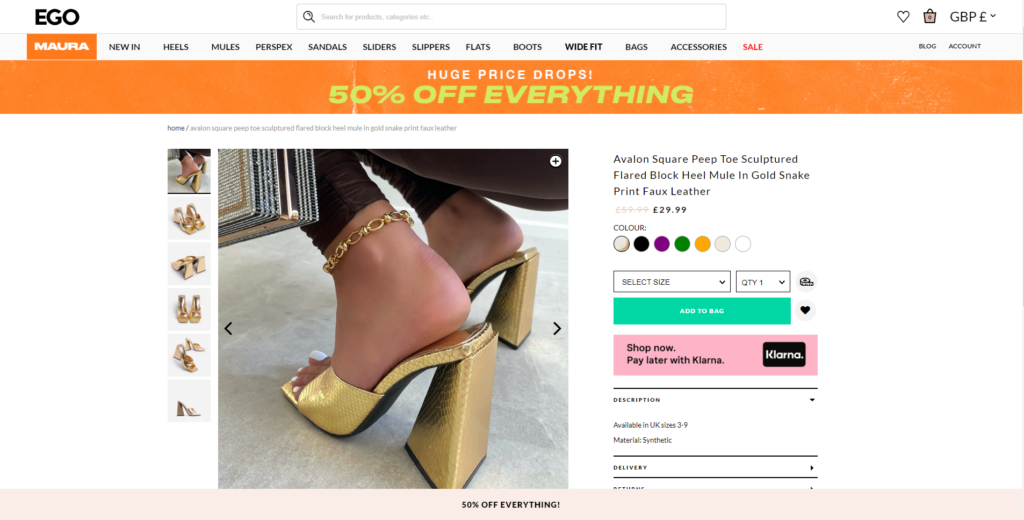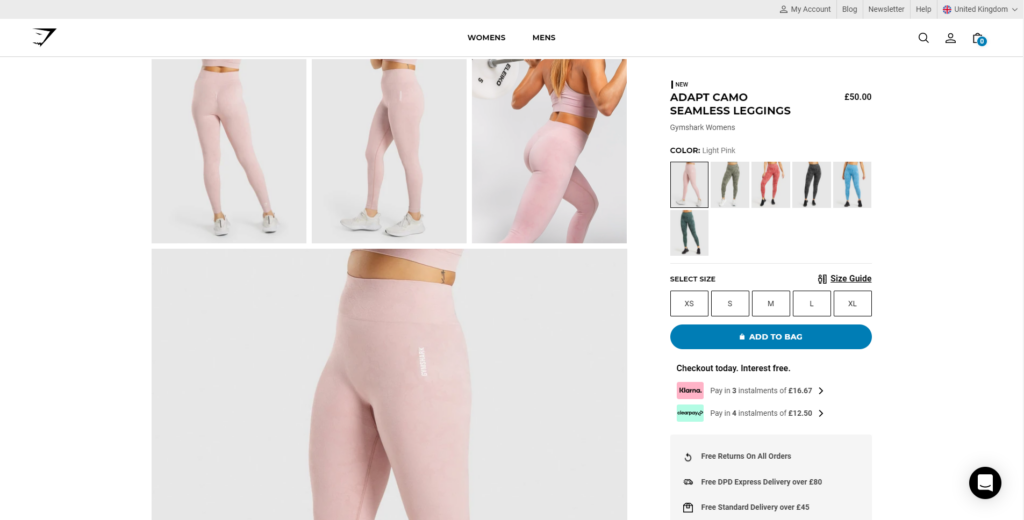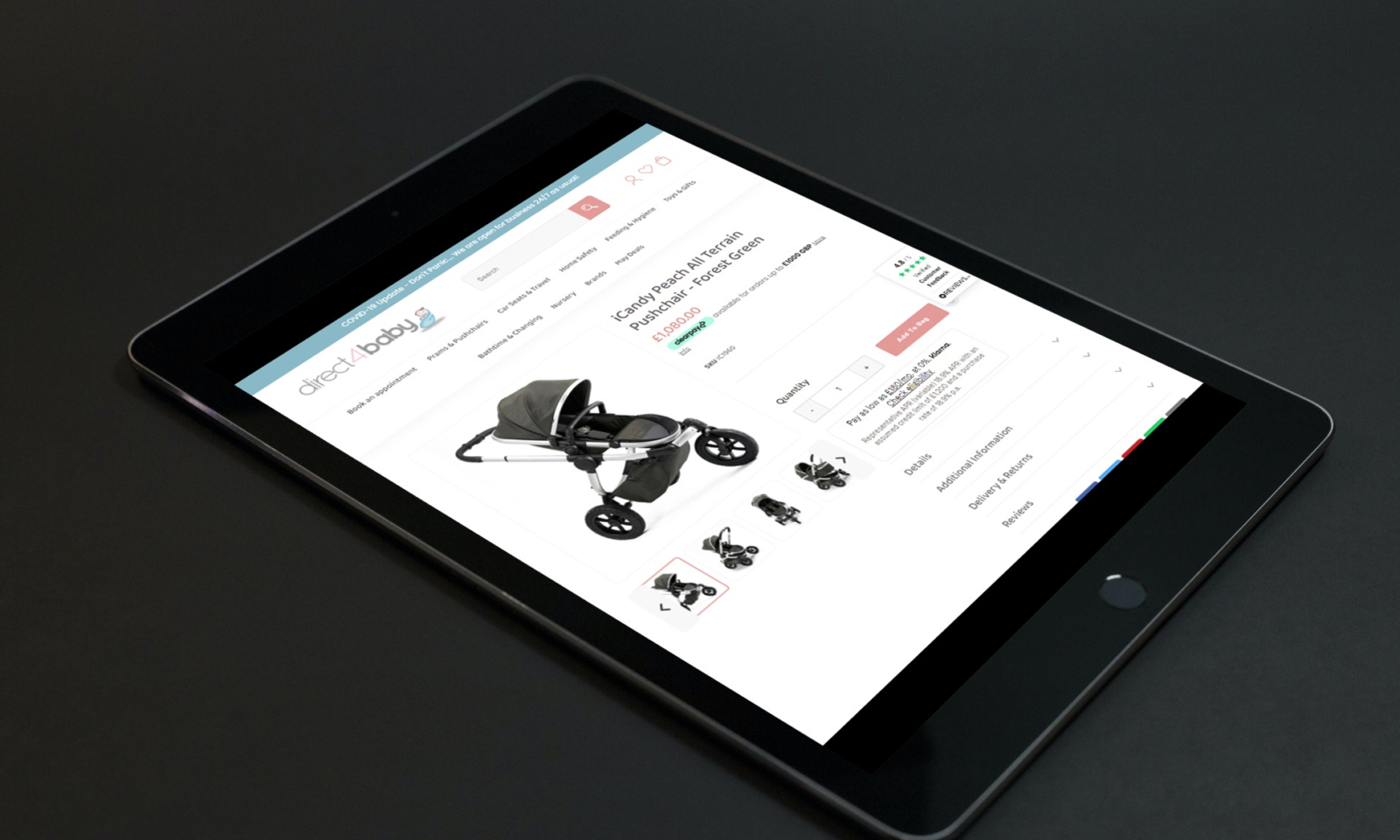When it comes to ecommerce, arguably nothing could be more important than product pages. This is often where your customers make the decision on whether to purchase or not, and a badly optimised product page could seriously hold your business back.
In this post, we run through some simple ways to optimise your ecommerce product pages and explain why it’s so important that you do.
What is product page optimisation?
Product page optimisation simply refers to the process of ensuring your website’s product pages are not only found via search engines, but also convert visitors into buyers. There are various aspects to consider, which we’ve listed below.
How do you optimise product pages?
Think like the customer
When it comes to developing an ecommerce website, it can sometimes be easy to forget that real people will be using it to spend real money. User experience is so important and should be at the forefront of everything you do, but especially when it comes to designing your product pages. These pages should be easy to navigate, take no more than two seconds to load (read our blog on site speed here) and include all of the information your customer needs in order to make a decision on whether the product is right for them.
Use high quality product photos
Your product photos will give website visitors a first impression of your products. Poor quality product photos are only going to leave potential customers with a negative image of your brand, products and website, as they appear unprofessional and don’t allow a proper look at the product in question. Product photos should be of high quality, well lit, and preferably taken against a white background. This doesn’t mean you can’t play around and be creative with lifestyle photography too, in fact a mix of both allows browsers to see the product in every scenario. Ego Shoes executes this well, with a mix of standard ecommerce photos and influencer-style shots.

33.16% of customers prefer to see multiple photos of a product, and if you can show the product in use, even better. This allows a customer to make an informed decision about their purchase.
Don’t forget mobile
Mobile commerce is set to grow 68% by 2022 – if your website isn’t currently optimised for mobile, now is the time to change that. With many of us spending more time on our smartphones than ever, it’s important that your products are available with the tap of a screen. Think about how your website appears on mobile – is your design fully optimised for a smaller screen? How long does it take to load? As well as general design, you may also want to consider other mobile-only features such as Apple Pay and whether it would be worth creating your own app.
Detailed product descriptions
Product descriptions serve a range of purposes. Firstly, they give customers all of the details they need in order to decide if a product is right for them. Here you should list all of the benefits and features of the item, the exact size specifications, care/maintenance instructions and basically convince the browser to buy. Product descriptions should be short and sweet, be written in your brand’s tone of voice, and be structured in a clear and simple way – we recommend using bullet points to highlight key features and important information. You may also want to include drop down features that include your company returns policy, sizing guides etc.
Product content also allows you to rank in search for keywords relevant to your product. Ensure you’ve done your research and have optimised your product title, description, metadata and alt tags with the relevant terms to help consumers find your products online. Appearing in the top results in the SERPs will greatly help you surpass your competitors and grow your customer base.
Clear call to action
Every product page should have a clear call to action. Keep it simple, such as “Buy Now” or “Add to Bag” – overcomplicating it may be confusing. Your CTA should be visible and in a prominent position on the page – it’s a good idea to make it a colour that stands out.

Here we can see that Shopify gymwear giant, Gymshark, has used a clear CTA button as well as multiple product shots and a helpful video.
Incorporate reviews and ratings
Product reviews can help to build trust in the quality of your products, and trust increases conversions. 85% of consumers trust online reviews as much as personal recommendations, and many will check reviews before making a purchase. Customer reviews also let you know why certain products may not be selling, what your customers do and don’t like, which greatly helps with product development.
Upsell and cross sell relevant products
Upselling and cross selling are great ways to increase average order spend and overall revenue. Of course, you should ensure that you are only presenting customers with relevant products when taking this approach – think about upgrades, add-ons, and matching items. For example, a fashion brand may include matching items or accessories to complete the look, or a bike company may feature links to helmets or mudguards.

Above we can see cosmetics brand Charlotte Tilbury have put this into action – when you view a product and scroll down the page, you’ll find other products it can be used with.
Transparent pricing and shipping costs
It’s obvious that product pages need to display the price. However, many ecommerce sites neglect to include shipping costs too, leading to a high basket abandonment rate. Additional charges added later in the purchasing process can be off putting. You can avoid this by listing shipping costs on the product page.
Ecommerce strategy & consultancy at Venture Stream
From crafting product descriptions that convert, to analysis and detailed reporting, we can help your brand grow. With an impressive portfolio of ecommerce brands under our belt, we know what works. Send us a message to discuss your needs and we’ll get back to you. In the meantime, you can read about some of our work over the years here.

